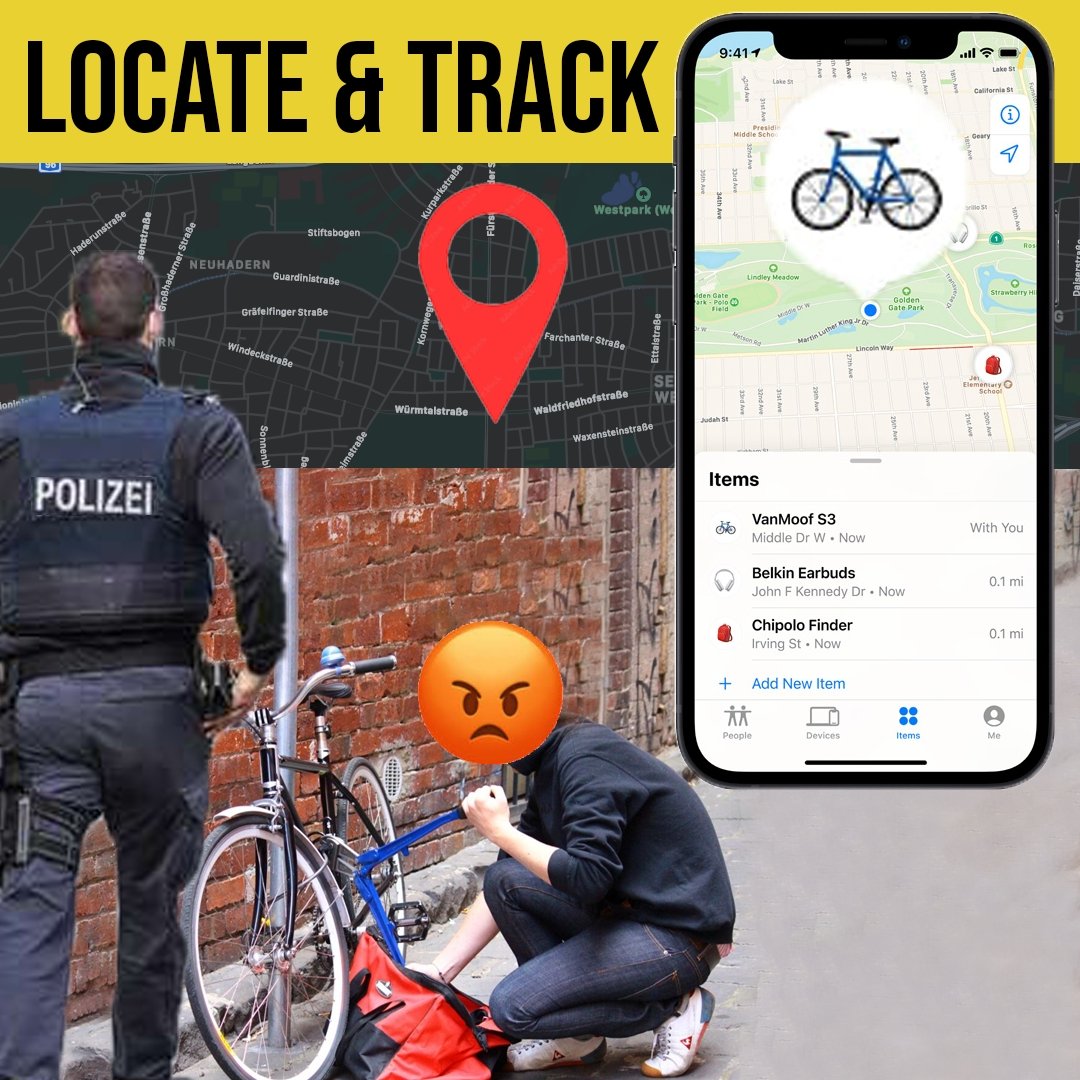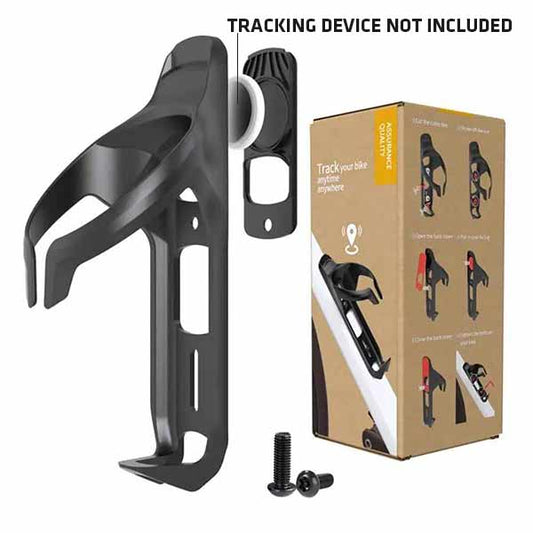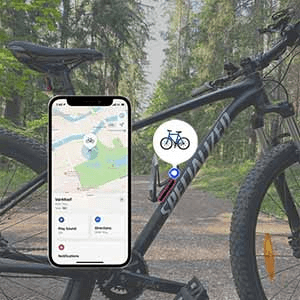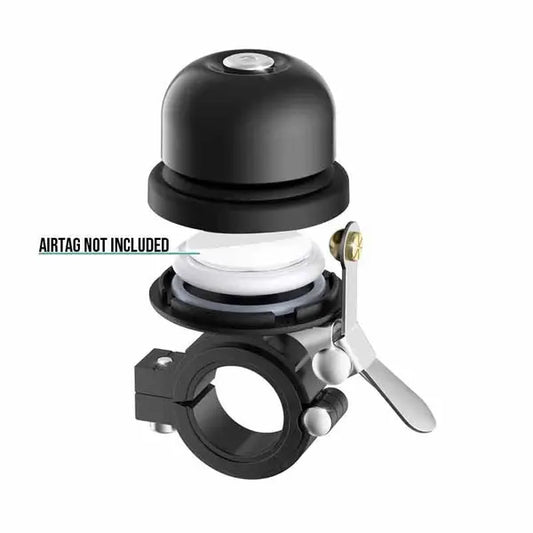The Ultimate Urban Cyclist Checklist for Newbies
Navigating through bustling city streets on two wheels can be both exhilarating and intimidating for those just starting their urban cycling journey. Whether you're commuting to work, running errands, or simply exploring your neighborhood, proper preparation is the cornerstone of smooth, safe, and enjoyable rides. Without the right gear and knowledge, urban cyclists often find themselves vulnerable to theft, mechanical issues, weather changes, and safety hazards.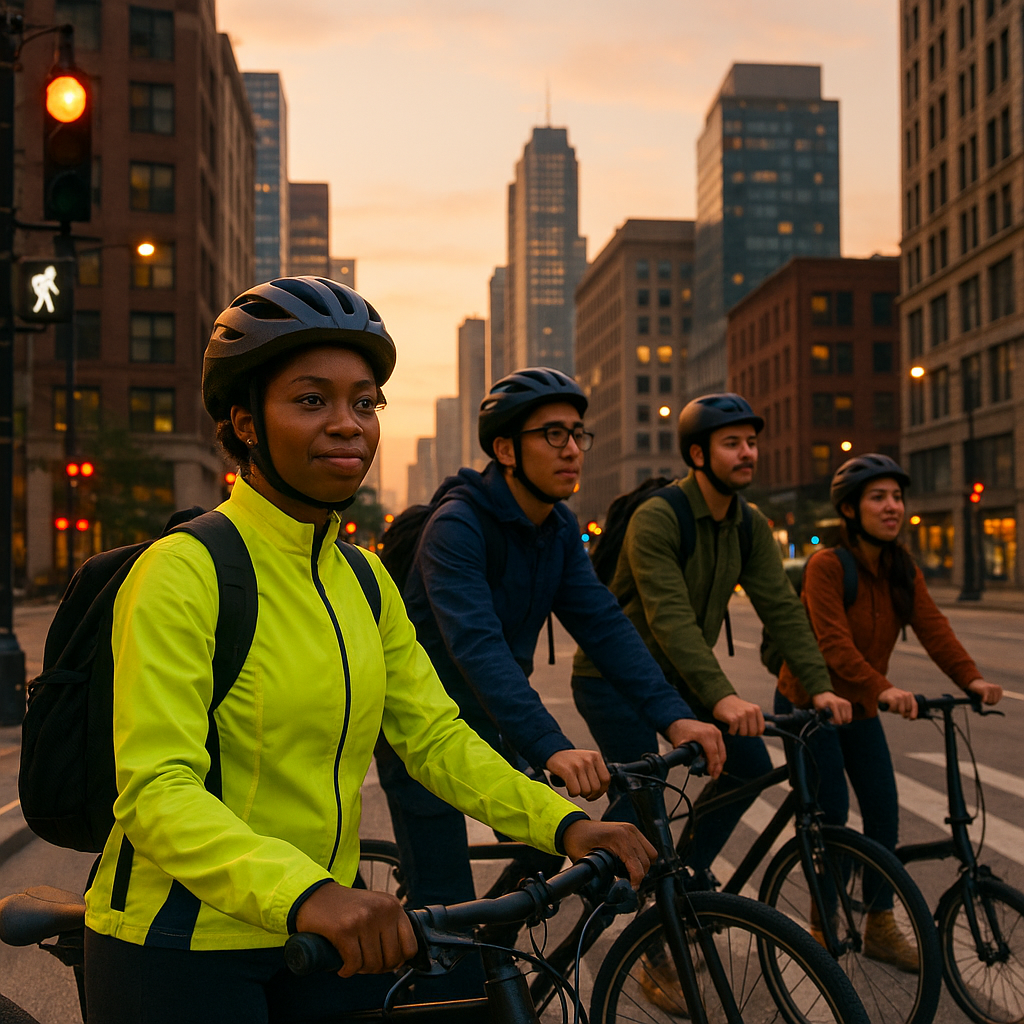
Bicycle theft is a common problem, but with the right tools and measures in place, it can be prevented. Beyond security concerns, being unprepared for flat tires, sudden downpours, or traffic challenges can quickly transform an enjoyable ride into a stressful ordeal. That's why having a comprehensive checklist before hitting the concrete jungle is non-negotiable.
In this guide, you'll discover everything needed to confidently navigate city streets as a beginner cyclist - from selecting the right bike and essential accessories to mastering security techniques and emergency preparedness. Let's equip you with the knowledge and tools to become a savvy metropolitan rider who's ready for anything the urban landscape might throw your way.
Choosing your urban commuter bike
Selecting the appropriate city bicycle forms the foundation of your entire cycling experience. The right bike makes navigating traffic easier, provides comfort during daily commutes, and suits your specific urban environment.
Types of urban bikes
Several styles are particularly well-suited for metropolitan riding:
- hybrid bikes - blend features from road and mountain bikes, offering versatility across different surfaces
- city/commuter bikes - typically feature built-in racks, fenders, and chain guards for practicality
- folding bikes - ideal for mixed-mode commuting and small apartment storage
- single-speed/fixed gear bikes - low maintenance and lightweight, perfect for flatter cities
- step-through frames - provide easier mounting/dismounting when wearing work clothes
When selecting your commuter bicycle, consider your typical routes, distance, storage options at home and work, and whether you'll need to combine cycling with public transportation.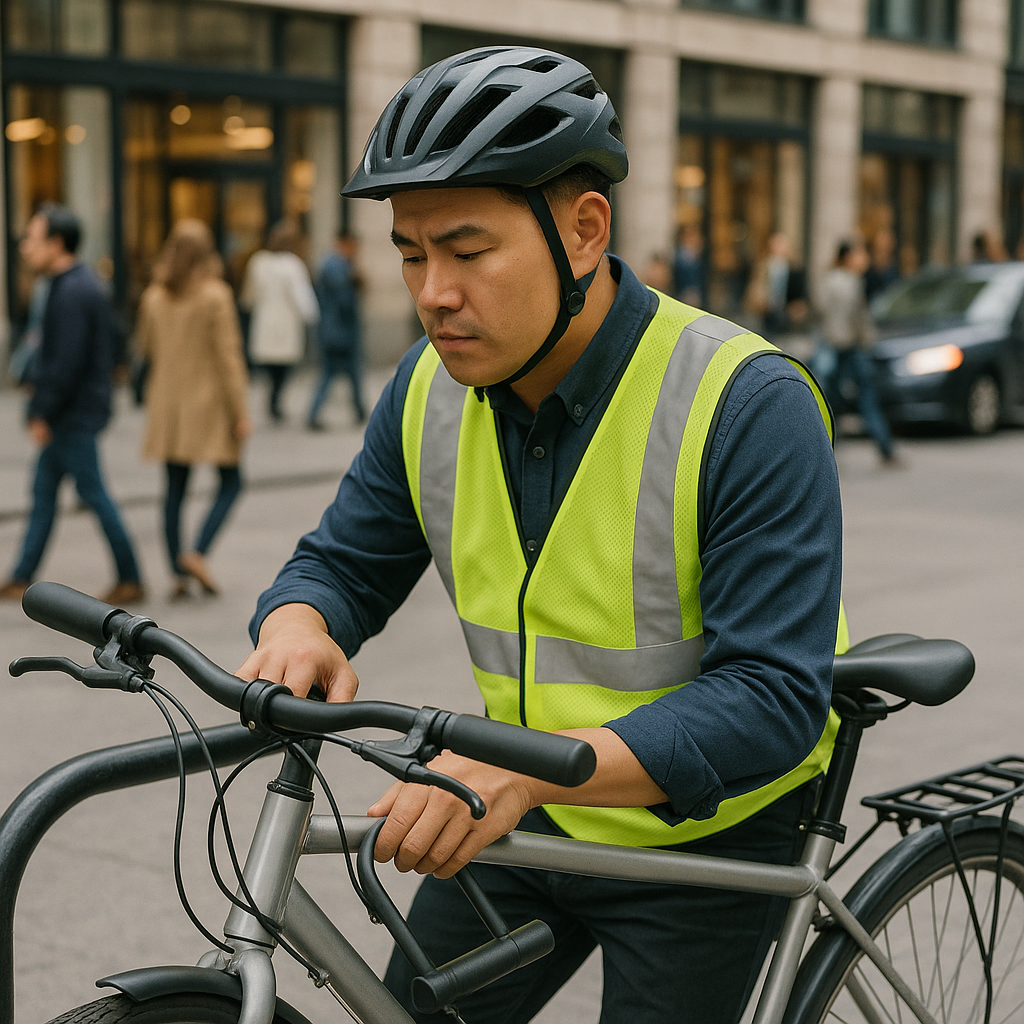
Many seasoned commuters recommend prioritizing comfort and practicality over speed for daily riding.
Essential upgrades for urban safety
Once you've secured your bike, several immediate upgrades can dramatically improve visibility and safety:
- front and rear lights - USB rechargeable options offer convenience and reliability
- reflective strips - for wheels, frame, and pedals to enhance visibility from all angles
- fenders/mudguards - keep road spray off your clothes and improve visibility in wet conditions
- bell or horn - essential for alerting pedestrians and other cyclists
- mirrors - help monitor traffic without constant head-turning
By integrating AirTag technology into a hidden bike mount, the Guards Armor Bike Mount offers cyclists a powerful tool to combat bike theft. These tracking devices provide peace of mind when parking in high-risk areas and significantly increase recovery chances if theft occurs.
Must-have urban cycling gear & accessories
Equipping yourself with the right gear transforms your urban riding experience from potentially risky to reliably comfortable. These items should be considered non-negotiable for every metropolitan cyclist.
Protection essentials
- Helmet: Select one that meets CPSC (US) or EN1078 (Europe) safety certifications. Proper fit is crucial - the helmet should sit level on your head, covering your forehead, with side straps forming a "V" shape under your ears and snug chin strap allowing only two fingers between strap and chin.
- Locks: Invest in at least one high-quality U-lock with Sold Secure Gold/Diamond rating. For complete security, pair with a secondary cable or chain lock to secure wheels and components.
- Lights: Front white light (steady and flashing modes) with minimum 300 lumens and rear red light with multiple visibility modes. USB-rechargeable options prevent battery waste and unexpected outages.
Comfort and convenience items
- Pump: Compact frame pump or mini-pump that attaches to your frame or fits easily in a bag.
- Daypack or panniers: Waterproof bags that distribute weight comfortably for carrying essentials.
- Cycling-specific clothing: Weather-appropriate attire that balances professional appearance with cycling comfort.
- Gloves: Padded cycling gloves prevent numbness on longer rides and protect palms during falls.
- Eye protection: Clear or lightly tinted glasses shield eyes from debris, insects, and harmful UV rays.
Many beginners skip essential items like proper lighting or quality locks, only to experience theft or safety issues within their first weeks of commuting. Investing in quality gear upfront prevents costly lessons later. A colleague recently shared how his neglect of proper lighting resulted in a collision with a pedestrian who simply couldn't see him during dusk hours - a painful reminder that visibility equipment isn't optional in urban environments.
Street-smart security: protecting your bike in the city
Urban environments present unique challenges for bicycle security, requiring multiple layers of protection and strategic thinking about where and how you secure your transportation.
Locking strategy fundamentals
- Always lock through the frame and rear wheel to an immovable object
- Position locks away from the ground to prevent leverage-based attacks
- Use secondary locks to secure front wheel and saddle if quick-release
- Avoid routinely parking in the same location to prevent targeted theft
- Choose high-visibility areas with foot traffic and security cameras when available
Strategic component security also matters - replace quick-release skewers with security skewers on wheels and seat posts, use security bolts for components, and consider "uglifying" expensive bikes with tape or removable vinyl when parked regularly in high-risk areas.
Location awareness and tracking
Understanding theft patterns in your city helps inform smarter parking decisions. High-risk areas typically include train stations, university campuses, and entertainment districts. When forced to park in these locations, minimize duration and maximize security measures.
By integrating AirTag technology into a hidden bike mount, the Guards Armor Bike Mount offers cyclists a powerful tool to combat bike theft. One urban rider shared how they recovered their stolen bicycle within hours using this hidden tracking technology, intercepting the thief before the bike could be dismantled or resold.
For indoor storage, consider space-saving wall mounts, ceiling hoists, or foldable bikes if apartment space is limited. Workplace security varies dramatically - survey options beforehand and request secure facilities if unavailable. Some employers now provide dedicated bike rooms or subsidized secure parking as sustainability initiatives.
Staying comfortable & prepared on every ride
Comfort directly impacts the sustainability of your cycling habit. When riding feels good physically, you're more likely to continue making it part of your daily routine regardless of distance or weather conditions.
Weather-appropriate attire
Urban cyclists frequently need to balance professional appearance with riding functionality. The layering approach works best across seasons:
- Spring/Fall: Lightweight, water-resistant jacket, removable arm/leg warmers, thin gloves
- Summer: Moisture-wicking base layers, UV protection, breathable fabrics, bandana/cap under helmet
- Winter: Thermal base layers, insulating mid-layer, windproof outer shell, warm gloves, ear protection
- Rain: Waterproof (not just water-resistant) jacket and pants, shoe covers, waterproof gloves
Many commuters keep a complete change of clothes at work and bring fresh items on specific days to minimize daily carrying needs.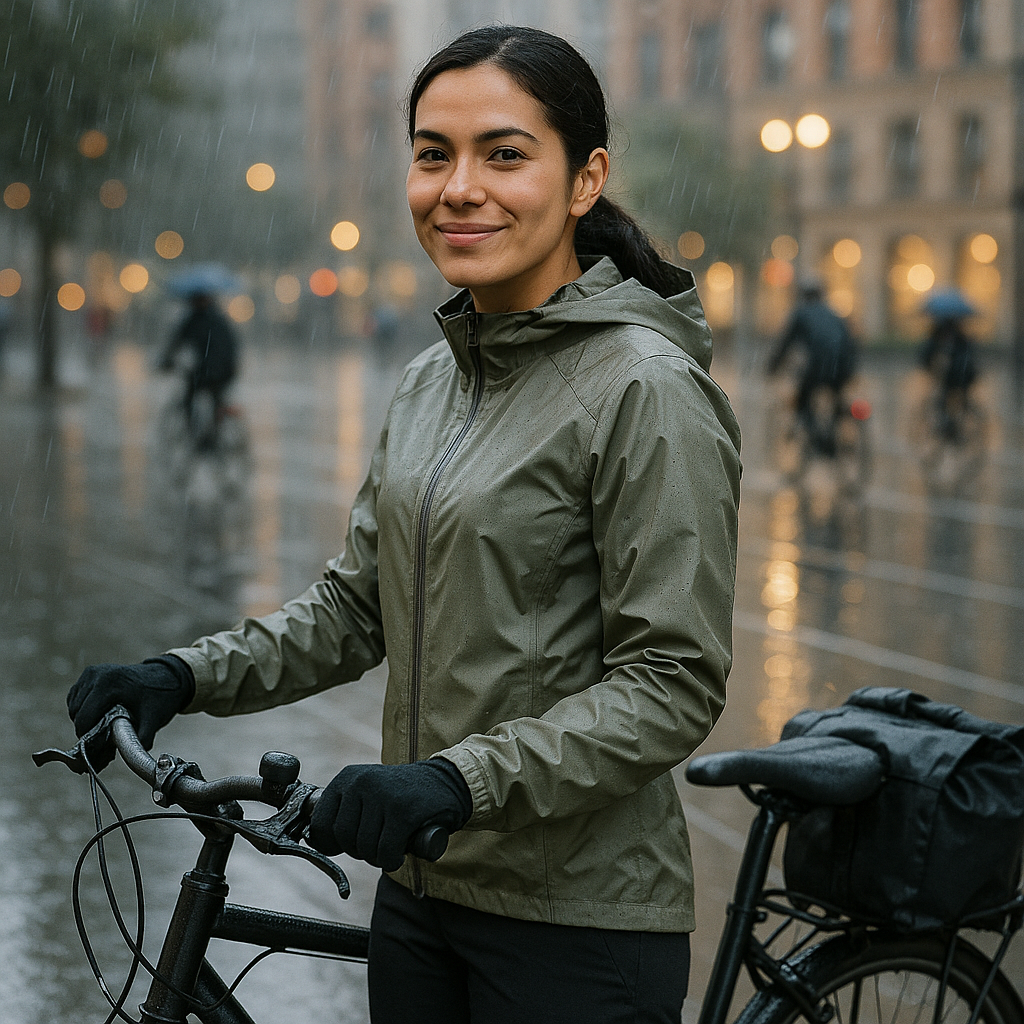
Others perfect the art of rolling clothes to prevent wrinkles when packed.
Carrying essentials
The choice between backpacks and panniers represents a key decision for daily riders:
- Backpacks: More versatile off-bike, easier for varied commutes, but can cause back sweat
- Panniers: Distribute weight to the bike rather than your body, higher capacity, keep your back cooler
This bottle cage not only securely holds my water bottle but also does an excellent job concealing the AirTag. Hydration remains crucial for city riding - even short commutes in hot weather can lead to dehydration that affects concentration and reaction time. For longer commutes, consider electrolyte supplements and portable snacks like energy bars or dried fruit to maintain energy levels.
When preparing for varying weather, remember the cyclist's mantra: "There's no bad weather, only inappropriate clothing." Having the right gear transforms challenging conditions into manageable riding experiences.
The "be prepared" mini-checklist: maintenance & emergency kit
Mechanical issues don't follow schedules. Having the tools and knowledge to handle common problems transforms potential disasters into minor inconveniences when navigating busy streets.
Essential repair items
Every urban cyclist should carry a compact repair kit containing: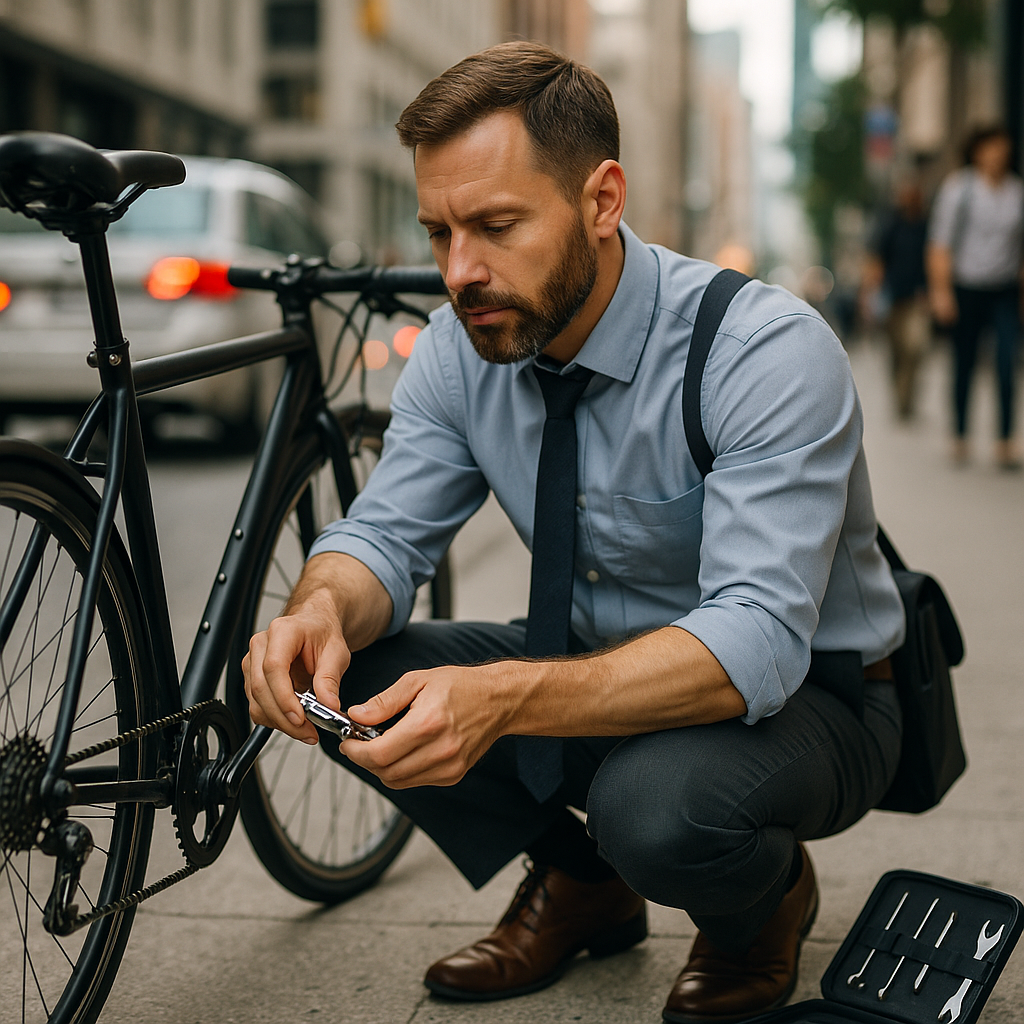
- Multi-tool: With Allen keys (2-8mm), screwdrivers, and chain tool
- Mini-pump or CO2 inflator: Compatible with your valve types
- Spare inner tube: Correct size for your tires
- Tire levers: Plastic ones prevent rim damage
- Patch kit: For multiple flats or helping fellow cyclists
- Disposable gloves: Keep hands clean during repairs
- $20 emergency cash: For unexpected situations or repair shop visits
A rider recently described how her repair kit saved an important job interview when she fixed a flat tire with ten minutes to spare - a stark contrast to another commuter who missed an important meeting after a preventable mechanical issue forced them to find alternate transportation.
Preventative maintenance habits
Developing a simple maintenance routine dramatically reduces roadside emergencies:
- Weekly tire pressure check (prevents flats and improves efficiency)
- Monthly chain cleaning and lubrication (extends drivetrain life)
- Regular brake pad inspection (critical for urban stopping power)
- Quarterly professional tune-up (catches issues before they become problems)
This mount is a good way to discreetly attach an Airtag to your bike. Beyond theft protection, location tracking provides peace of mind for family members concerned about your commuting safety. Many urban cyclists set their bikes up with tracking to enable loved ones to monitor their journey progress, especially on longer or unfamiliar routes.
Remember that basic maintenance skills build confidence. Consider attending a free bike maintenance workshop offered by many local bike shops or cycling organizations to learn essential skills in a supportive environment. These skills not only save money but empower you to handle situations independently.
Pre-ride safety check
Perform this quick "ABC" check before every ride:
- Air: Proper tire pressure and condition
- Brakes: Functioning correctly front and rear
- Chain: Clean, lubricated, moves smoothly
This 30-second inspection prevents many common issues from surfacing mid-ride and has become second nature for experienced commuters who report fewer unexpected mechanical problems as a result.
Conclusion
Starting your urban cycling journey well-equipped dramatically increases safety, comfort, and enjoyment. While the checklist might seem extensive initially, each element serves a purpose in transforming potentially stressful situations into manageable moments. Prioritize safety essentials first - helmet, lights, and locks form your non-negotiable foundation.
As your confidence grows, gradually expand your gear collection based on your specific needs and challenges. Urban cycling offers unparalleled freedom, consistent commute times, improved fitness, and environmental benefits that far outweigh the initial investment in proper equipment.
Remember that every seasoned metropolitan rider started as a beginner. The cycling community typically welcomes newcomers enthusiastically - don't hesitate to ask questions at local shops, join urban cycling groups, or connect with experienced commuters for route recommendations and city-specific advice.
With your checklist complete, it's time to explore your city from an entirely new perspective. The urban landscape transforms when experienced from a bicycle - revealing shortcuts, hidden gems, and a connection to your environment impossible to achieve from behind a windshield or underground in transit systems.
FAQ
What's the most important accessory for a new city cyclist?
A high-quality helmet for safety, with a robust lock (preferably with theft tracking) a close second.
How do I keep my bike from being stolen in the city?
Lock through the frame and wheel to an immovable object; use a Sold Secure lock and consider an AirTag or GPS tracking mount.
What type of clothing should I wear for year-round urban cycling?
Layer up: Use a breathable waterproof jacket, adaptable gloves, visible clothing, and consider cycling-specific shorts for comfort on longer rides.
Is it better to use a backpack or panniers for commuting?
Panniers keep the weight off your back and can be more comfortable for longer commutes, but a well-ventilated cycling backpack works great for lighter daily loads.
What's in an ideal "commuter repair kit"?
Mini-pump, spare tube, tire levers, compact multi-tool, patch kit, and a pair of latex gloves—kept in a saddlebag or backpack for every ride.
